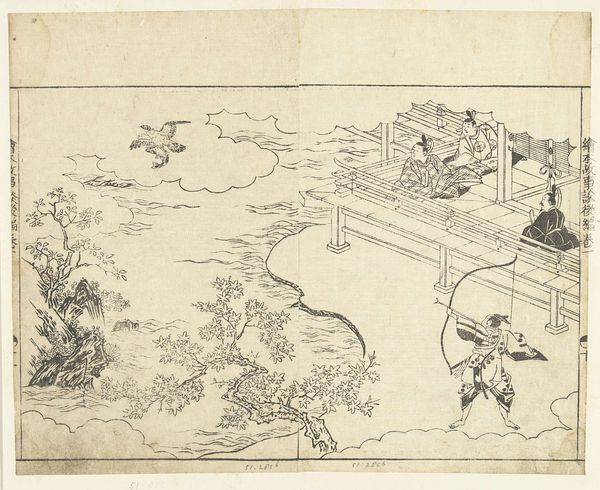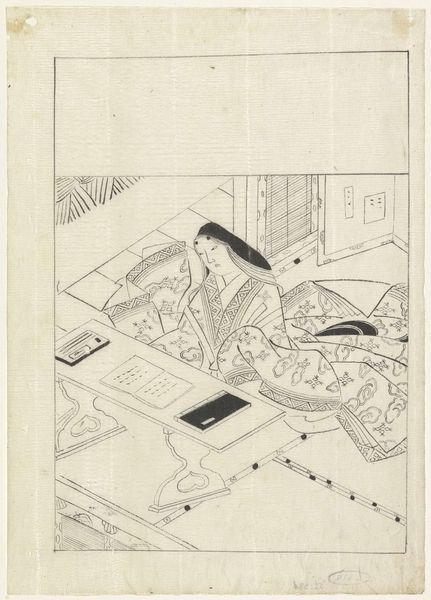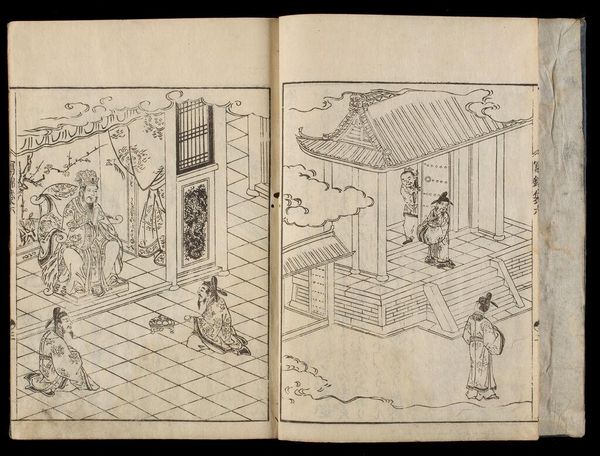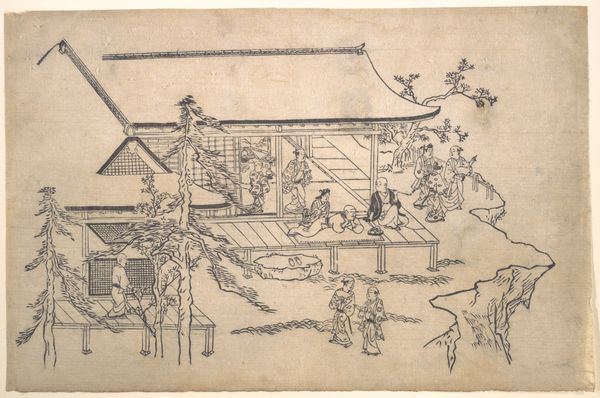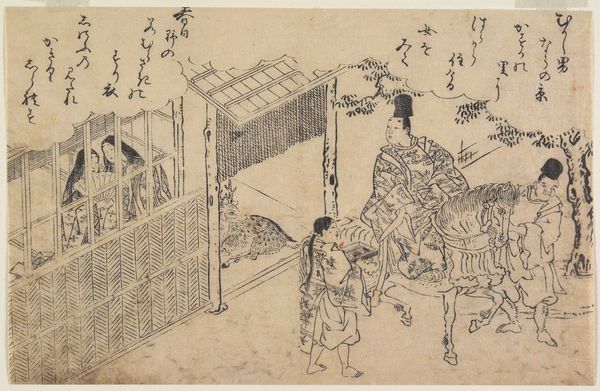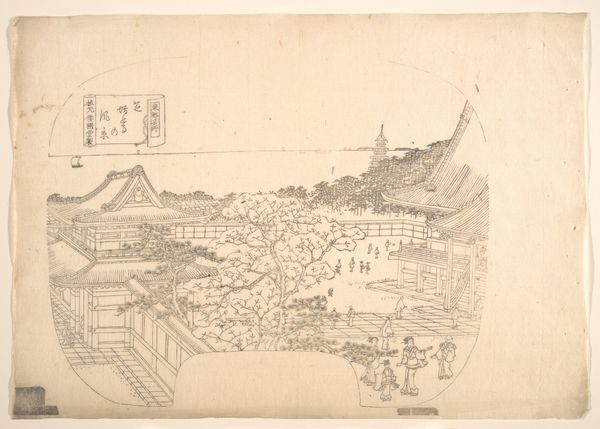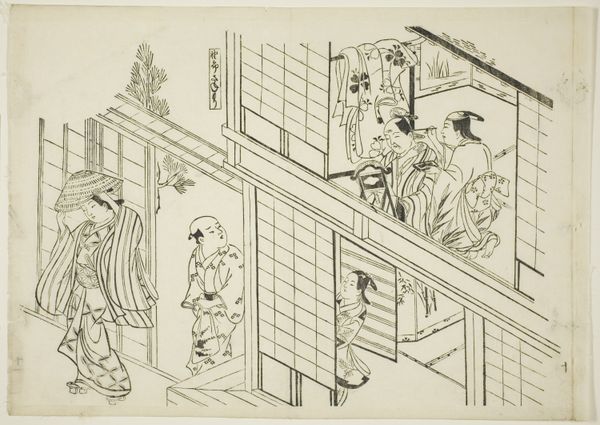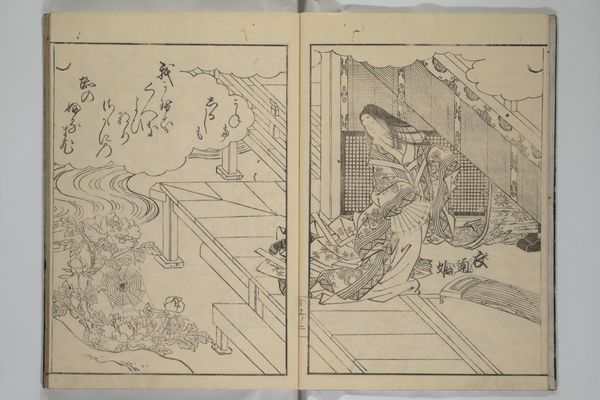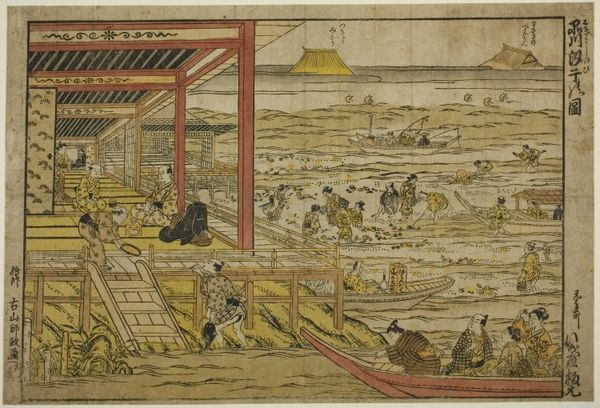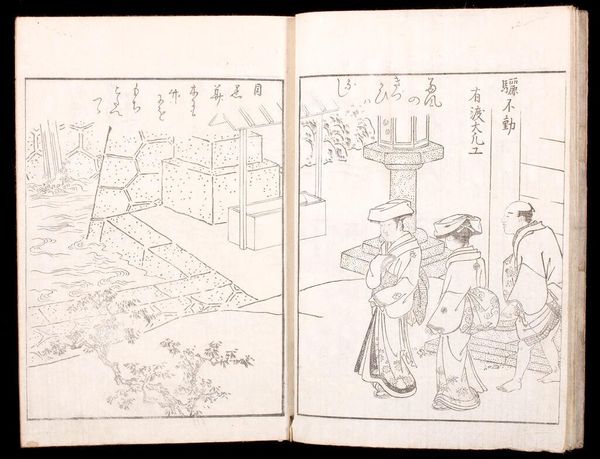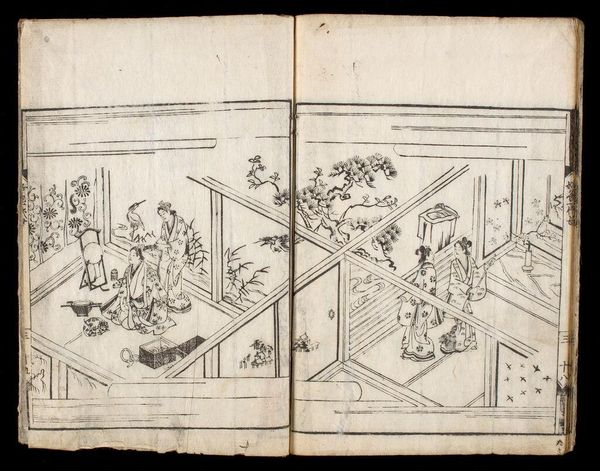
woodblock-print
#
asian-art
#
landscape
#
ukiyo-e
#
woodblock-print
#
genre-painting
Dimensions: height 251 mm, width 317 mm
Copyright: Rijks Museum: Open Domain
Editor: This is "Maruyama in Nagasaki," a woodblock print made sometime between 1785 and 1820 by Katsukawa Shuntei. The monochromatic print depicts multiple groups of figures interacting across different levels and spaces. I find it quite intriguing, particularly the detail achieved through the woodblock medium. What strikes you most about this piece? Curator: I immediately think of the means of production itself. This isn't simply an image; it's an artifact of labor, created through the meticulous carving of woodblocks. Look at the linear precision defining the architectural elements, contrasting the softer renderings of foliage and garments. Consider, then, the class dynamics in play here. The depicted activities – socializing, observing – suggest leisure, while the artist and artisans producing this print operate within different structures of work and commerce. What sort of distribution networks would carry these prints? Who consumed them? Editor: That's fascinating. I hadn't thought about the actual carving process and the contrast between the depiction of leisure and the labor involved in creating it. So the choice of the woodblock medium itself is significant? Curator: Absolutely. Woodblock printing made art more accessible, moving away from unique, elite works toward reproducible images for wider consumption. Ukiyo-e, or “pictures of the floating world," often represented everyday life and popular culture. This reflects a shift in art production, engaging broader audiences beyond aristocratic circles. Think about the market pressures and how it may have affected Shuntei’s output or choices within the composition itself. Is there a standardization happening for quicker distribution? Editor: It's really interesting to consider the social context intertwined with the material process. Curator: Precisely! It’s in the details of the technique –the line, the repetition– that reveal so much about the relationship between art, labor, and society. What seemed simply a snapshot of everyday life then speaks volumes about consumer culture of Edo-period Japan.
Comments
No comments
Be the first to comment and join the conversation on the ultimate creative platform.
